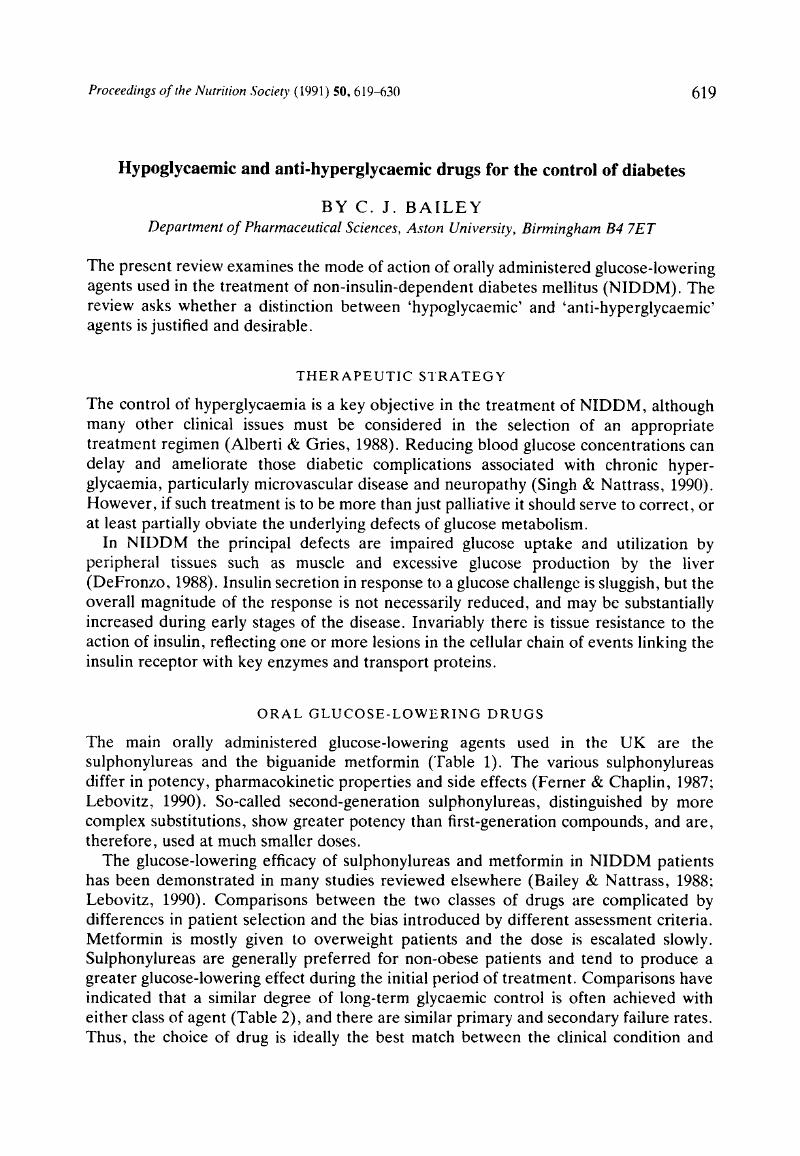Crossref Citations
This article has been cited by the following publications. This list is generated based on data provided by Crossref.
Cantello, Barrie C.C.
Cawthorne, Michael A.
Haigh, David
Hindley, Richard M.
Smith, Stephen A.
and
Thurlby, Peter L.
1994.
The synthesis of BRL 49653 - a novel and potent antihyperglycaemic agent.
Bioorganic & Medicinal Chemistry Letters,
Vol. 4,
Issue. 10,
p.
1181.
Lohray, Braj B.
Bhushan, Vidya
Rao, Bheema P.
Madhavan, Gurram R.
Murali, Nagabelli
Rao, Krovvidi N.
Reddy, Ananth K.
Rajesh, Bagepalli M.
Reddy, Pamulapati G.
Chakrabarti, Ranjan
Vikramadithyan, Reeba K.
Rajagopalan, Ramanujam
Mamidi, Rao N. V. S.
Jajoo, Hemant K.
and
Subramaniam, Swaminathan
1998.
Novel Euglycemic and Hypolipidemic Agents. 1.
Journal of Medicinal Chemistry,
Vol. 41,
Issue. 10,
p.
1619.
Reddy, K. Anji
Lohray, B. B.
Bhushan, V.
Reddy, A. Sekar
Mamidi, N. V. S. Rao
Reddy, P. Papi
Saibaba, V.
Reddy, N. Jaipal
Suryaprakash, A.
Misra, Parimal
Vikramadithyan, Reeba K.
and
Rajagopalan, R.
1999.
Novel Antidiabetic and Hypolipidemic Agents. 5. Hydroxyl versus Benzyloxy Containing Chroman Derivatives.
Journal of Medicinal Chemistry,
Vol. 42,
Issue. 17,
p.
3265.
Lenzen, Sigurd
and
Peckmann, Thomas
2001.
Effects of tolbutamide and N -benzoyl- d -phenylalanine (NBDP) on the regulation of [Ca 2+ ] i oscillations in mouse pancreatic islets 1 1Abbreviations: KIC, α-ketoisocaproic acid; NBDP, N-benzoyl-d-phenylalanine; and SUR1, sulfonylurea receptor..
Biochemical Pharmacology,
Vol. 62,
Issue. 7,
p.
923.
Gupta, Dipti
Ghosh, Narendra Nath
and
Chandra, Ramesh
2005.
Synthesis and pharmacological evaluation of substituted 5-[4-[2-(6,7-dimethyl-1,2,3,4-tetrahydro-2-oxo-4-quinoxalinyl)ethoxy]phenyl]methylene]thiazolidine-2,4-dione derivatives as potent euglycemic and hypolipidemic agents.
Bioorganic & Medicinal Chemistry Letters,
Vol. 15,
Issue. 4,
p.
1019.
Bian, Xiaoli
He, Langchong
and
Yang, Guangde
2006.
Synthesis and antihyperglycemic evaluation of various protoberberine derivatives.
Bioorganic & Medicinal Chemistry Letters,
Vol. 16,
Issue. 5,
p.
1380.
Bosi, Paula Lima
Delfino, Gabriel Borges
Durigan, João Luiz Quagliotti
Cancelliero, Karina Maria
Polacow, Maria Luiza Ozores
and
Silva, Carlos Alberto da
2008.
Metformina minimiza as alterações morfométricas no músculo sóleo de ratos submetidos à imobilização articular.
Revista Brasileira de Medicina do Esporte,
Vol. 14,
Issue. 5,
p.
436.
Ahmad, Shamim
Javed, Kalim
Rathish, I. G.
Bano, Sameena
and
Alam, M. S.
2009.
Synthesis and Blood Glucose Lowering Activity of Novel Benzenesulfonyl-Urea Derivatives.
Phosphorus, Sulfur, and Silicon and the Related Elements,
Vol. 184,
Issue. 10,
p.
2516.



